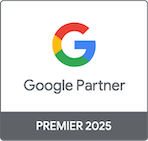Around 36% of digital ad spend is attributed to invalid traffic, resulting in annual global losses of billions.
How to fix display ads not converting in 2025: Boost ROI with creative testing and ClickPatrol
Abisola Tanzako | Nov 20, 2025
Table of Contents
- Why poor ad placements cause display ads not to convert
- Low-quality inventory drains your budget
- Invalid traffic and ad fraud distort results
- Poor viewability reduces human interaction
- Brand safety risks
- Why creative testing alone does not solve the display ads not converting
- How to fix display ads not converting: A two-step approach
- Using ClickPatrol to improve converting display ads
- Real-world examples of fixing display ads that are not converting
- Case study 1: Avis increases conversions by 123% thanks to cleaner ad placements
- Case study 2: Conservio saves 17% of ad spend and gains 14% cleaner traffic
- Common pitfalls and how to avoid them
- Final thoughts: Stop display ads that are not converting
Many advertisers struggle when their display ads are not converting. By combining creative testing with placement optimization and using ClickPatrol to filter out low-quality sites, you can significantly improve conversions and ROI.
In 2025, poor ad placements are projected to waste billions of dollars globally. Beyond the financial loss, ineffective placements distort conversion data, making it harder to identify which creatives truly perform.
In this guide, we’ll explore why your display ads are not converting, how to run better creative tests, and how ClickPatrol can ensure your ads appear only on high-quality, high-performing sites.
Why poor ad placements cause display ads not to convert
Well-designed creatives can fail if served on the wrong websites. Bad placements waste your budget and can directly contribute to display ads not converting.
Low-quality inventory drains your budget
Made-for-advertising (MFA) sites are designed to carry ads rather than provide real content.
These sites account for 15% of ad spend and generate 21% of impressions, meaning your ad appears on paper rather than in front of real users likely to take action.
Invalid traffic and ad fraud distort results
Invalid traffic (IVT), often bot-controlled, can account for 15–45% of ad impressions, depending on the definition. Non-human traffic may represent up to 36% of global digital ad spend.
This artificially inflates clicks and impressions, making it challenging to judge actual creative performance and contributing to display ads not converting.
Poor viewability reduces human interaction
Over 56% of digital ads are never seen, meaning a significant portion of impressions never reach an actual viewer. Low viewability slows conversions and misrepresents ad effectiveness.
Brand safety risks
Poor placements can appear next to unsafe or inappropriate content, which happens for 1 in 4 digital ads. This not only hurts conversions but can damage long-term brand trust.
Why creative testing alone does not solve the display ads not converting
Many marketers run A/B tests on banner design, messaging, or calls to action, but if ads are mostly served on low-quality or irrelevant sites, even the best creative will fail. Example:
- You test two versions of a creative, A and B.
- 30% of impressions go to spammy or irrelevant domains.
- Both versions show similar conversion rates, leading you to conclude that creative does not matter. In reality, poor placements dilute performance. This is why combining creative testing with placement quality is essential to solving display ad conversion issues.
How to fix display ads not converting: A two-step approach
Here is a two-step approach to fix display ads that are not converting.
Step 1: Run better creative tests
- Set clear conversion goals: Focus on meaningful events like purchases, form submissions, or sign-ups.
- Segment your audience: Use in-market, retargeting, or demographic segments to test creatives within defined groups.
- Perform A/B or multi-variant tests: Test visuals, messaging, value propositions, and CTAs. Run tests long enough to reach statistical significance.
- Use learnings beyond clicks: Track conversions, CPA, post-click engagement, bounce rate, and time on site.
Step 2: Optimize placement quality
- Audit placements regularly: Review “where ads showed” reports to spot low-performing sites.
- Exclude low-quality domains: Block MFA sites, apps, and domains with poor engagement.
- Monitor viewability: Filter placements with viewability below 50–70%.
- Use real-time protection: Tools like ClickPatrol alert you to suspicious inventory so you can block it immediately.
Using ClickPatrol to improve converting display ads
ClickPatrol automates placement protection and helps advertisers focus their spend on high-performing inventory.
- Intuitive placement exclusion: Blocks MFA sites, bot-ridden domains, and irrelevant apps automatically.
- Real-time monitoring: Provides live alerts and dashboards for suspicious traffic.
- Bulk exclusions at scale: Integrates with Google Ads, DV360, and The Trade Desk to apply exclusions efficiently.
- Prioritizes viewable, high-value inventory: Focuses on placements with >70% viewability and reputable domains.
- Brand safety and compliance: Helps prevent unsafe or irrelevant content, protecting both conversions and the brand’s reputation.
- Actionable reporting: Ties savings from blocked placements back to ROI impact.
Real-world examples of fixing display ads that are not converting
Case study 1: Avis increases conversions by 123% thanks to cleaner ad placements
Challenge: Losing ad spend to poor-quality placements.
Solution: ClickPatrol provided real-time traffic insights and excluded irrelevant sites.
Results:
- +123% conversions
- +91% CTR
- -36% CPA
Case study 2: Conservio saves 17% of ad spend and gains 14% cleaner traffic
Challenge: Spending heavily but failing to convert.
Solution: ClickPatrol identified 14% of traffic as non-human and optimised placements.
Results:
- 17% ad spend saved
- 14% cleaner traffic
These examples prove that pairing creative testing with placement protection delivers measurable ROI improvements from display ads.
Common pitfalls and how to avoid them
Below are the common pitfalls and how to avoid them.
- Blocking too aggressively: Start conservatively and gradually expand exclusions.
- Misaligned creative tests: Track meaningful conversions, not just clicks.
- Ignoring viewability: Make it a core KPI. Filter low-viewability impressions.
- Insufficient iteration: Continuously update exclusion lists and refresh creatives based on results.
Final thoughts: Stop display ads that are not converting
When display ads are not converting, it is often not the creative that is the problem; it is poor placement.
By combining enhanced creative testing with ongoing placement optimization, advertisers can increase conversion rates, reduce wasted spend, and protect their brand.
ClickPatrol automates placement filtering, prioritizes viewable inventory, and reallocates budget to high-performing placements.
Combined with disciplined A/B testing, this framework ensures your ads reach real, engaged users, turning wasted impressions into measurable ROI.
Start using ClickPatrol today to automatically filter low-quality placements, boost viewability, and turn every impression into real conversions.
Frequently Asked Questions
-
How much of digital ad spend is estimated to be fraudulent or non-human?
-
What viewability threshold should I look to improve conversions?
Most marketers use a 50–70% viewability cutoff, with research showing optimal ad recognition when at least 75% of the creative is visible for a few seconds.
-
Can ClickPatrol be integrated with major ad platforms?
Yes, Google Ads, DV360, The Trade Desk, and more, enabling bulk exclusions and real-time monitoring.
-
Will excluding many placements reduce my reach or scale?
It can if done too aggressively. Start conservatively, expand exclusions gradually, and maintain scale while improving quality and conversion.






